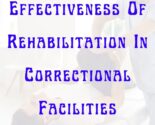
Geriatric Health: A Public Health Perspective
Keywords- Public, Health, Geriatrics, World Health Organization
Author: Dr. Saumya Lal
Introduction
The process that changes fitting people into fragile adults with an increased risk of disease, injury and death was outlined by Miller. Some changes occur in an organism throughout the course of time. These alterations ultimately result in an organism’s demise. When old age starts, no one knows. The United Nations and associated organisations like the WHO have designated the age of 60 as cut-off age for the aged. The population of senior people over 60 will rise by 2050 from 10.11% to 21.5% of the population of India. Which is a much greater percentage of elderly people in the region of 320 million.
The main characteristics of aging are increased inter-individual variability, complexity, and co-morbidity. Which is why health and social quality measures in the developed nations, based on a single disease model, operate in a less good way with older than younger individuals.
In developed nations, such as India, ageing is also linked by:
Poverty, family support decrease, social isolation, housing deficiency, mental illness, widowhood, sorrow, cognitive malfunction and restricted life-support choices.
Goal for 21st Century
The goal for the 21st century is to postpone the development of incapacity and provide older people with an ideal quality of life. At a time when governments are examining means of providing funds for healing and rehabilitation for the elderly, preventative and promotional services for older people at the primary health level might be of particular relevance. Individualized health promotion and preventative inspections of the elderly have proved to be extremely successful and are expected to be one of the causes for decreasing handicap for the elderly to the extent of stable spending in health care.
Frailty is a prominent age-related health problem. While the idea is virtually widely recognised, it nevertheless has a disputed operational meaning. However, due to its numerous clinical and social implications and dynamic character, this ageing disease represents a very significant public health problem, both at a patient and at a society level. In this section, we examine existing frailty definitions and assessment techniques, stress the implications of this geriatric syndrome and address the significance of its screening and prevention to reduce its impact on public health.
When does Ageing occurs?
In terms of biology, ageing occurs from the influence overtime of the accumulation of a range of molecular and cellular damage. This causes the physical and mental capabilities to gradually decline, the danger of illness increases and eventually death. These changes, however, are not linear or constant and in years they are weakly related with the age of a person. While some 70-year-olds are highly healthy and workable, some 70-year-olds are vulnerable and need considerable assistance from others. Ageing is also linked to other life transitions over and beyond biological changes, including retirement, transfer to more suitable housing and the loss of friends and companions. It is vital to examine not just ways that improve losses associated with elderly age, but also approaches that can enhance recovery, adaptability and psychosocial growth in the development of public health responses to aging.
Common Old-age Diseases
Common old-age diseases include hearing loss, chronic obstructive lung disease, diabetes, depression and dementia. Osteoarthritis, back, neck pain, and back and neck discomfort are also commonly observed. In addition, they are increasingly susceptible to numerous ailments simultaneously as individuals age. Older ages are also defined by the development of a few complicated health conditions which only occur later in life, without falling into the categories of distinct diseases. These are sometimes referred to as geriatric syndromes. Often, they are the result of several underlying causes such as frailty, urine incontinence, falling conditions, delirium and pressure ulcers.
Geriatric syndromes seem better than the presence or quantity of particular illnesses to prevent mortality. In addition, however, in conventionally organised health care and epidemiological research, Geriatric Medicine is frequently not established as an expert in nations.
Factors that affect Healthy ageing
- Although some variations in older people’s health are hereditary, many of them are attributable to people’s physical and social conditions, including sex, ethnicity or socio-economic position, including their homes, districts and communities and personal traits.
- These variables begin at an early stage to impact the ageing process. The conditions in which people live as youngsters – or even as fetuses – combined with their individual traits affect how they age for a long time.
- Environments also have a major impact on healthy behaviour development and maintenance. Maintaining healthy habits, including a balanced diet, regular physical exercise and refraining from the use of cigarettes. These all contribute to the reduction of the risk of non-communicable illnesses and to improved physical and intellectual performance.
- Behaviors also remain important in older age. Strong muscle mass exercise and good food can help preserve cognitive capabilities, delay reliance and reverse fragility.
- Contexts support people, despite limitations in capacity, to do what they require. The provision of secure and accessible public buildings and transit and easily accessible surroundings are examples of supportive environments.
Challenges in reacting to ageing
Old age diversity
“Typical” elderly people are not present. Some 80-year-olds have equivalent mental and physical abilities as many young people of 20 years. At a far younger age, other people suffer severe losses in physical and mental abilities. This broad spectrum of older people’s experiences and demands must be addressed through a thorough response.
Inequities in health
The variety observed in earlier years is not altered. Much of the influence of these surroundings on their chances and health habits, comes from the physical or social contexts. Our interaction with our environment is affected by personal factors such as the family into which we were born, our sex and our ethnicity, resulting in health disparities. The cumulative effect of these health inequalities over the life cycle is attributable to a substantial share of the diversity in later years. These disparities must be reduced and not reinforced by public health policies. public health policy.
Stereotypes outdated and ageist
Older adults are generally seen to be vulnerable or reliant and to have a social burden. This and other age attitudes that might result in discrimination. It have an effect upon the way policies are formed and the chances for older people to enjoy healthy ageing must be addressed by public health and society at large.
A World in Quick Change
The lives of older people are directly and indirectly influenced by globalisation. Technical advancements (such as in transport, communication), urbanisation, migration or changing sex norms. Although the number of surviving generations has grown in a family. For example, these generations now live separately more than in the past. The present and predicted trends and policies must be assessed in response to public health.
Global Strategy Consultations and Action Plan on Healthy Aging and Aging Commitment.
- Requires knowledge of the importance and dedication to healthy ageing and continued work to develop evidence-based policies that enhance the capacity of older people.
- Health systems are aligned with the requirements of elderly people. Health systems must be properly structured according to the requirements and preferences of older people and integrated with the environment and care providers. So that older people can increase their intrinsic ability. Actions in this field are closely connected with other activities within the organization to provide universal healthcare and integrated services to people.
- Development of long-term care systems. Long-term care systems are necessary for the requirements of the elderly in all countries. This means that systems, infrastructure and labour capability need to be developed, often out of nowhere. Work by WHO on long-term (including palliative) care is closely aligned with initiatives to improve the universal coverage of health; treat non-communicable illnesses, and build people-centered, integrated healthcare systems.
- Measurement, monitoring and comprehending improvement. A broad spectrum of ageing concerns requires focused study, new measurements and analytical approaches. This study is based on the significant effort of WHO on improving medical and data statistics. Such as the WHO Global Ageing Study and Adult Health (SAGE)
Conclusion
Improved health and socioeconomic conditions have led to individuals living longer. Yet not everyone thrives as they age in excellent health. Although the oldest age may be long-lived, many suffer from several interacting health problems that can have a dramatic effect on their varied and often complicated health outcomes. The health of the population is not reflected correctly in the condition in which people who live longer than usual ageing indicators like longevity reflect.
Frailty has become an important health issue linked with ageing and contributes to a number of components of public health; both at the patient and the social level. While the theoretical basis for fragility is well established in the literature and the term is virtually widely recognised. As this condition is recognised as a complex notion. It is still contentious to decide which components should be included in the frailty description. Whatever the concept of evaluation technique employed, our ageing population is interested in the burden of this syndrome and in its cost to the person as well as to society. The screening and comprehensive therapies of frailty, therefore, seem crucial for public health.
Contact at edumoundofficial@gmail.com






